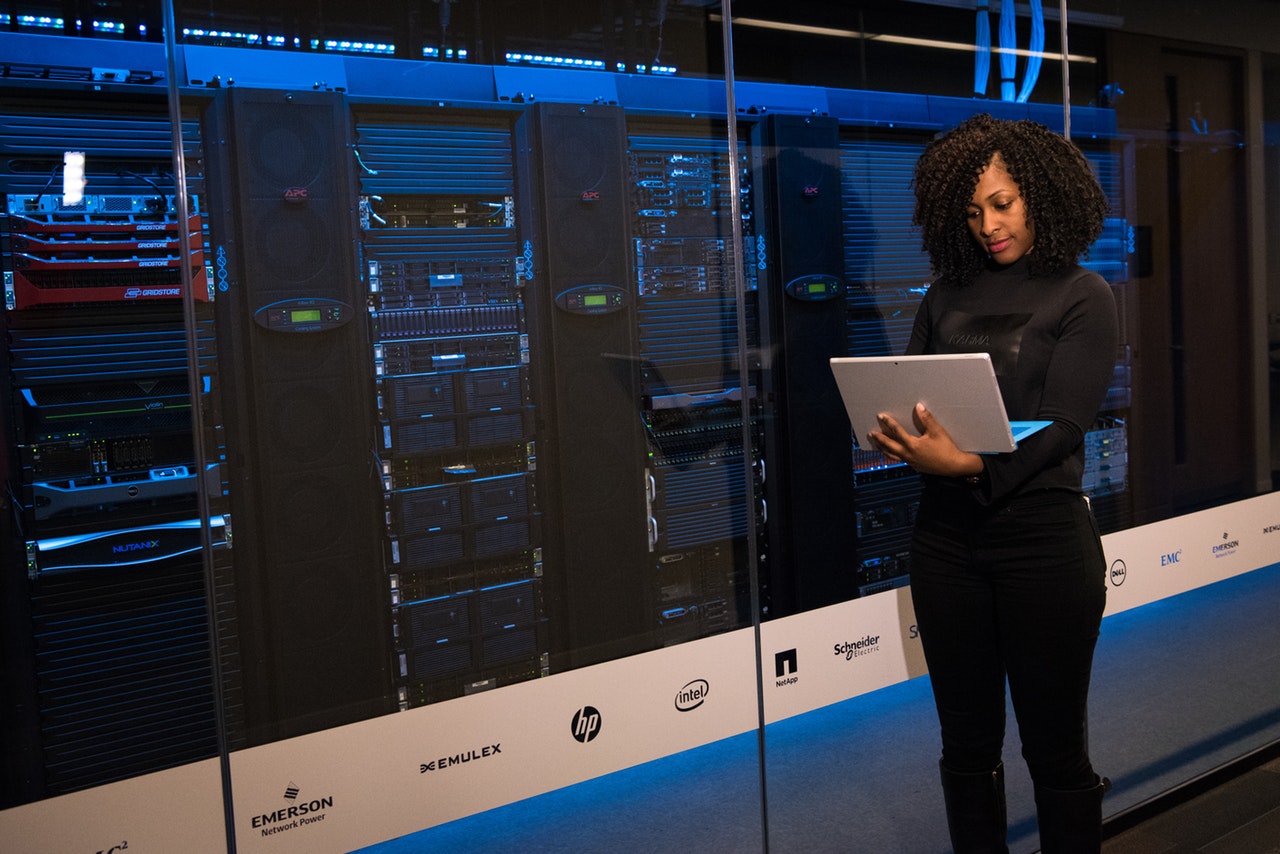Understanding What Client Server Architecture Is All About
Computing architecture follows a variety of models to apply to most scenarios in which certain agents communicate over the Internet. The actors in this type of ecosystem include clients or users, the Internet, and servers that belong to entities that are providing some sort of product or service. One of these models is the client server architecture that handles the partitioning of tasks between the servers of the product or service. Most websites, smartphone apps, and services such as email are based on this model.
In fact, it is prevalent across the Internet so much so that it is the basis of how the Internet functions. The Internet is a service that is perpetuated by peer-to-peer connections and data centers which contain resources that are provided to clients that request them but is classified as a client-server model since resources are often served by servers that do not act as clients.
What Is Client Server Architecture?

As briefly mentioned earlier, client-server architecture is an application structure for an online product or service. It breaks down workloads between servers and clients to handle communication between clients and the network they are accessing. In this model, the server shares resources with the clients, but the client does not share any resources and can request content from the service. Communication is first established when a client queries the server, the server waits for incoming requests, and handles them as defined by the service. One of the most common applications of the client server architecture model is email.
Compared to other implementations of similar architecture, namely peer-to-peer architecture, client server architecture ensures a business entity is able to securely abstract their resources from clients in order to protect their intellectual property while allowing clients to use their products and services. This architecture ensures quality competition to help companies sustain their market potentials by leveraging a secure model of remote communication with clients using servers.
Abstraction is what allows major products like Google Maps or email to remain dynamic yet secure for a flawless user experience while businesses can monetize these products. Peer-to-peer networking, on the other hand, does not have secure servers from trusted businesses available for use. Ultimately, receiving communications, files, and other resources are left in users’ hands and peers’ trust, and the stability of such networks depends on the ability of the peer computers to uphold network resources.
In a perfect storm scenario, peer-to-peer networks are extremely volatile and prone to disintegration due to a lack of security which individual clients cannot ensure.
Client server architecture has advantages that include improved data sharing, the capability of advanced data processing, easy maintenance, and security. Improved data sharing refers to the fact that businesses are regulated and must ensure data is retained, backed up, and kept safe and can only be manipulated on a server where designated clients have access through authorized access tokens. Advanced data processing refers to the robust availability and power of business servers.
Offloading processing and power requirements from clients allows user interfaces to be lightweight and efficient platforms for clients to input their queries while the robust servers that businesses manage on a worldwide scale can handle the big data crunching in a timely and efficient manner to provide end users with a fluent workflow.
How Does It Work?

The client server architecture model can be characterized by the way programs behave with each other within an application is an abstraction of the service’s resources that a client does not have to be concerned with. For instance, if a client wants to deploy a virtual instance on a service like Amazon Web Service (AWS) Elastic Cloud Computing (EC2) platform, the amount of available resources on AWS’ end has no effect on their ability to allocate their desired amount of resources to deploy their instance. This abstraction is present throughout most applications of the client and server architecture.
A product or service’s main goal is to interpret user inputs and return a response that the client is tasked with understanding based on how well the service is able to format their output, where a service is classified as a product that shares resources of a server. In this model, a client computer provides the user with an interface and some application processing, and a server provides storage, data management, and assets to build formatted outputs on the user interface.
This is how most data centers around the world function and serve applications like smartphone apps, desktop software, and networking for peer-to-peer applications such as downloads or games.
The client server architecture is essentially a two-way street. Once a client establishes a connection with the server, the server may also communicate with the client to serve patches and updates to keep a product or service up to date. Client server connections are only open as long as the client keeps the program running to keep the connection established. Once the client closes the connection, the server cuts the connection to conserve bandwidth and space.
Different Types

1-Tier Architecture
1-tier client server architecture describes the various sections of the model being present within the same system. Although this setup is reasonable, it is difficult to manage since there is a lot more overhead in dealing with all forms of data being stored in the same database ecosystem. The business logic and data logic are managed within the same layer in the server and must be actively separated in order to allow the application to render the correct outputs for clients.
This tier is best for situations in which software is packaged in a single layer for distribution like music players or document processors which store and access resources within the system. In such a case, the operating system is leveraged to help manage communications between the client and their computer, which acts as the server for 1-tier applications.
2-Tier Architecture
This tier architecture is similar to 1-tier architecture, but the difference is that there is a database tier that is introduced which is not stored on the client’s machine. The client only contains the interface, and the database is managed by a server. Business and data logic is still managed by the client or can be managed by the server. When this layer is client-side, it is known as a fat client thin server architecture. Otherwise, business and data logic managed on the server is known as a thin client fat server architecture, which is often the more affordable option.
2-tier architecture is characterized by operations between only two layers, and there should be no intermediate layer where input or output is processed or passed through. This tier of architecture maintains rapid response rates to be efficient and to avoid confusion between multiple clients. A common use-case for 2-tier architecture is handling online ticket reservations. An interface on the client side allows the client to pick a ticket to reserve, and the database on the server side stores the information.
3-Tier Architecture
A middleware layer is introduced in the 2-tier architecture to create the 3-tier architecture. This new layer of middleware serves as a filter for client requests. The middleware protects the 2-tier architecture and ensures efficient operation by handling input receiving and output delivery. Although the system is expensive and difficult to implement, it is easy to use in production environments.
Storing business and data logic in the middleware allows the service to stage changes to the interface, storage of data, and formatting of output before delivering any data to the client or server, allowing the application to be flexible in managing data flowing between both parties. The presentation layer is the client’s interface which allows the client to submit queries, the application layer is where the server takes care of the application’s logic to translate inputs and generate outputs, and the database layer handles the server system of fetching, decoding, and executing responses.
In current times, this model of architecture is the most sought-after implementation of client server architecture due to the efficiency and effectiveness of having middleware software to filter responses. It provides inherent security for both the client and server while ensuring both parties receive the correct queries. The complexity of the architecture is crucial in a world of business technologies that are leveraging computers and networks to serve customers and manage a huge amount of information on a daily basis.
Conclusion

Computing architecture is becoming more complex as software adapts to tackle tasks that are getting complex by the day. Algorithms and theorems were employed to discover models of computing to adapt complex tasks to these models to simplify the characteristics of programs administered by businesses. The client server architecture model is one of the simplest models to be implemented on a worldwide scale and is the most effective for both clients and businesses to leverage.
Reducing overhead from the client and offloading it to production servers run by businesses that can handle the workloads is a workflow that almost every entity can adopt and implement to bolster a business. The model is simply tiers of management where a client uses an interface which passes data to middleware which passes the query to a server which renders data, stores it in a database, and provides formatted output for the user to understand.
Nowadays, client server architecture is extended into the cloud, which is essentially a pooled server with expendable resources provided en masse by the parent company where a client makes a request the same way they would with a small server. This model is by far the most effective way to maintain consistency among a large clientele, and it is hard to match its efficiency with other models.
